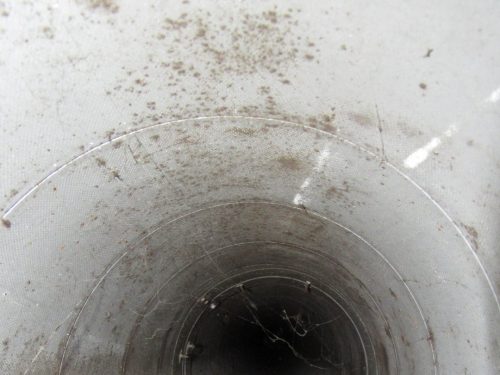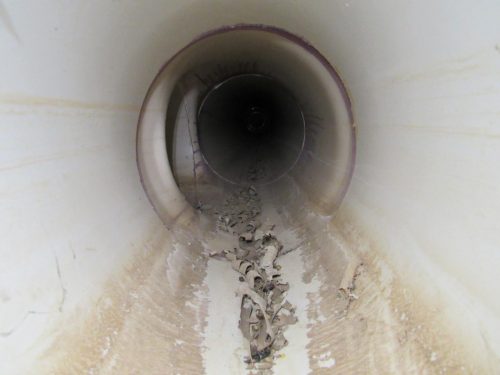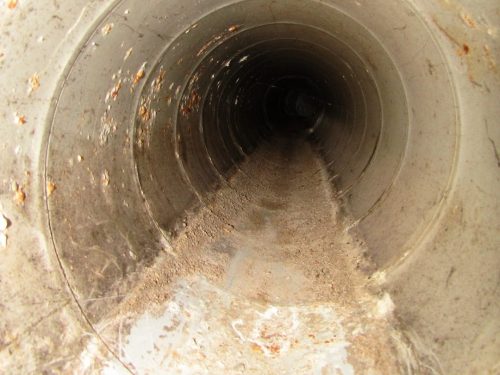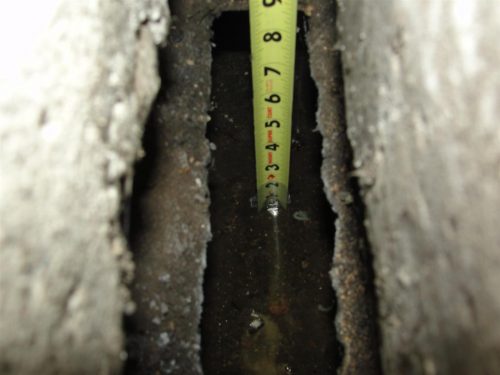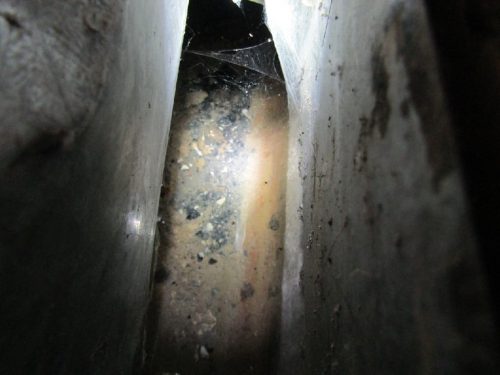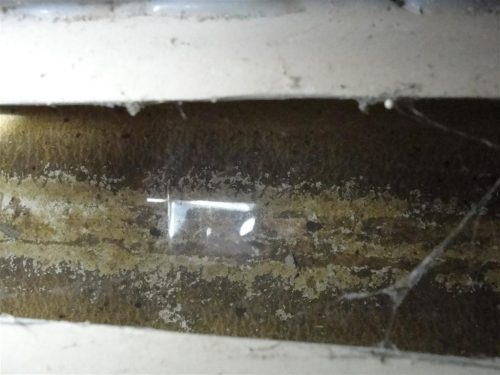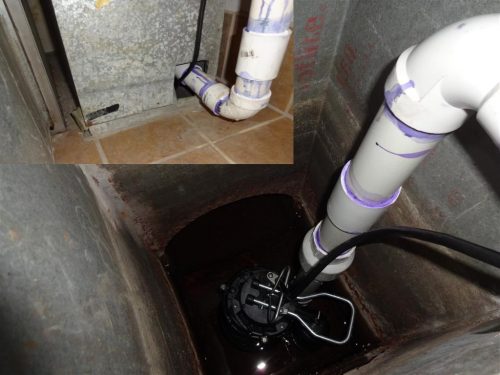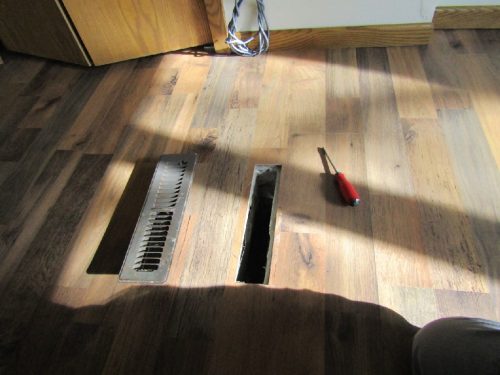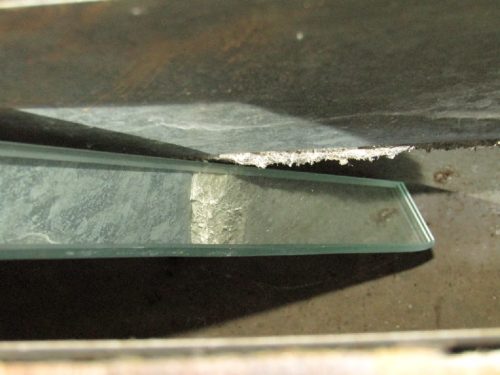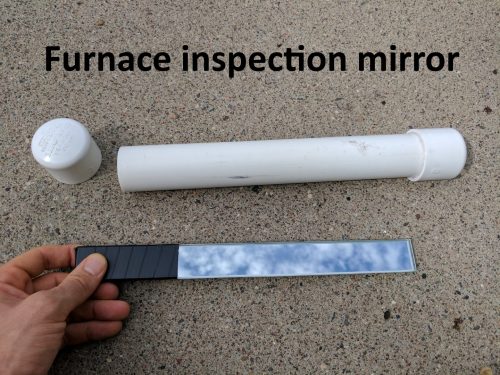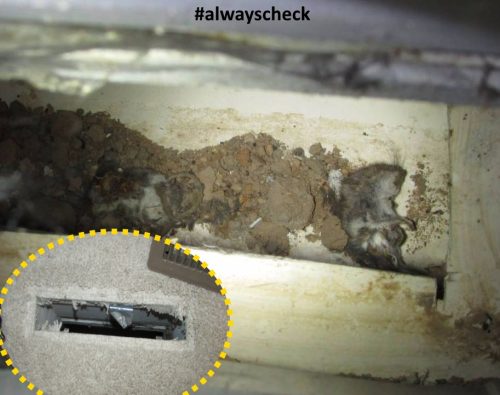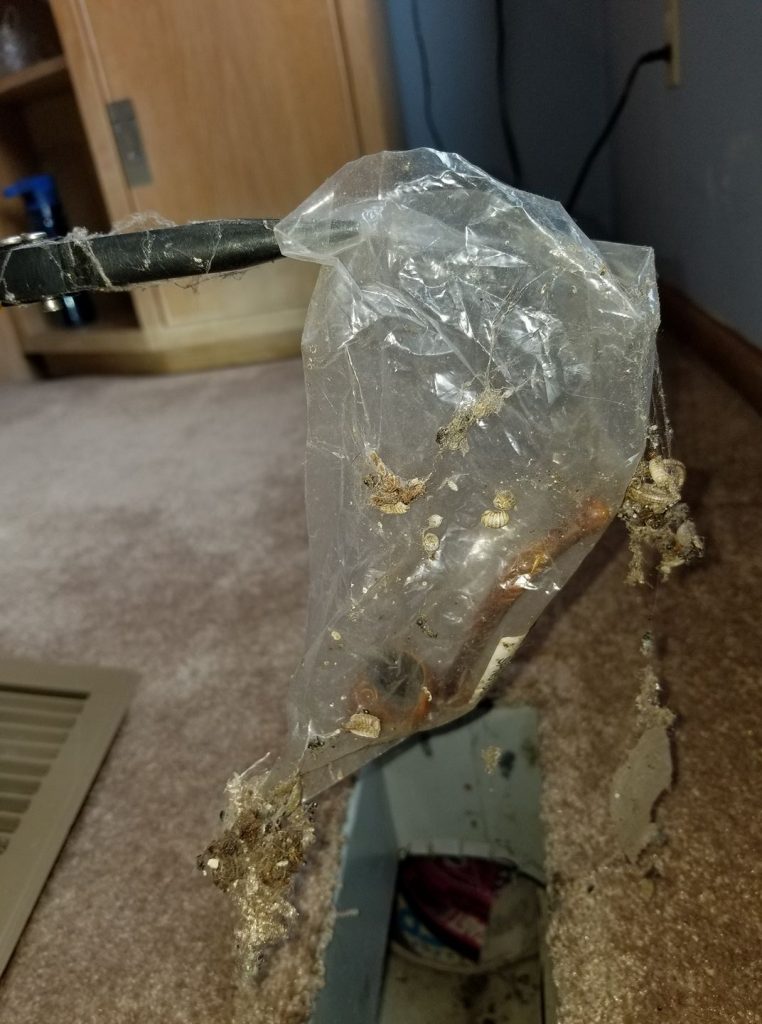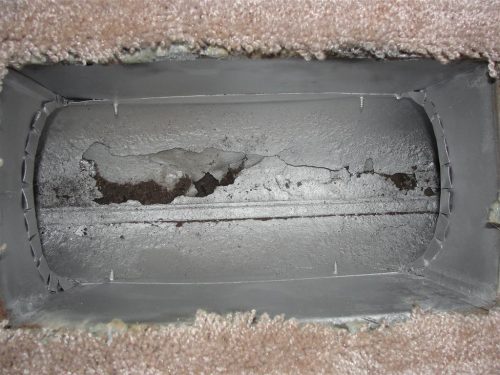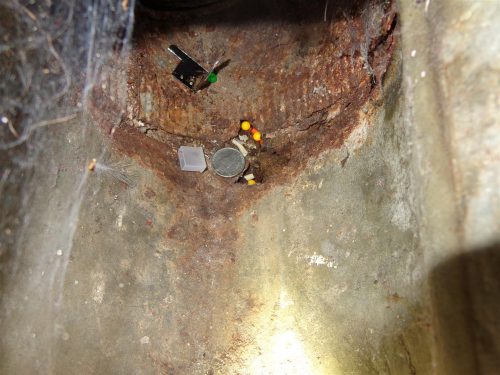In last week’s blog post on transite heat, I explained that most sub-slab ductwork is not transite. It’s not transite heat, it’s not transite ductwork, and it should not be labeled as such unless the ductwork is actually made from transite. If it is, that means it contains asbestos.
The biggest concern with all sub-slab ductwork is the potential for water to enter the ducts, which is what today’s blog post is all about.
Definition: sub-slab ductwork is ductwork installed below the concrete floor.
Water is bad news
Regardless of what type of sub-slab ductwork is present, water is the main concern. If water finds its way into sub-slab ductwork, mold can follow. This leads to poor indoor air quality and health concerns. That stuff at the top of the duct in the picture below sure looks like mold, doesn’t it?
It’s important for us home inspectors to carefully inspect sub-slab ductwork for any signs of past water intrusion. The image below shows a modern PVC duct with clear signs of chronic water problems.
Here’s another duct with a similar situation, but not as bad.
The rest of these images show sub-slab ductwork with standing water.
We’ve inspected a handful of homes with such serious ductwork problems that the homeowners have resorted to installing sump pumps inside their return plenums. No joke. We’ve seen this done many times.
How to inspect sub-slab ductwork
The best practice for inspecting sub-slab ductwork is to remove every floor register possible and use a mirror and a flashlight to look for signs of water.
I use a long, skinny stick of mirror for this, as shown below.
I mentioned this mirror in my home inspection tool list.
If all the visible portions of the ductwork are intact and dry, I don’t have any concerns to report.
My company also offers sub-slab ductwork inspections. We use a sewer inspection camera with a very small head to accomplish this.
What to do
If there are signs of water intrusion with any type of sub-slab ductwork, this is a concern. The next step is to drill down and ask more questions.
If there are simply water stains, was something done to prevent water from coming in again? Exactly what was done? How long ago? Has it stood the test of time?
If there is water in the system, this is a major concern with two potential courses of action: abandonment or repair.
If sub-slab ducts are going to be abandoned, they need to be sealed off and new overhead ductwork needs to be installed. This is an expensive option because the new ductwork typically needs to be installed in an already-finished space.
The other option, repair, consists of two steps. First, the source of the water needs to be corrected. This will probably require the services of a basement waterproofing company. Most importantly, the obvious stuff like exterior water management would need to be addressed first. If that has already been addressed but hasn’t solved the problem, the home might need to have an unusually deep drain tile system installed. It must be deeper than the sub-slab ductwork.
The second step requires encapsulation or lining of the ductwork. It won’t fix water intrusion, but it should eliminate any air quality concerns, and it’s far less expensive than abandonment.
A few more photos (just for fun)
Here are a few more goodies we’ve found in sub-slab ductwork:

